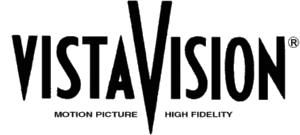

A STATEMENT FROM PARAMOUNT ABOUT VISTAVISION Read The Book and ignore the stuff below Comment from your Curator:
John Pytlak, of Eastman Kodak, has provided the second publication for our new Technical Library. A Statement from Paramount about VistaVision is an excellent companion piece for the CinemaScope booklet. It was written by Loren Ryder, head of Paramount's camera department and the father of the VistaVision process.
Some of the information contained in this booklet will clear up a number of items that have been misunderstood about the intentions of Paramount regarding the production and presentation of feature films in the VistaVision process. One cannot help but detect that Paramount was scrambling hard to counteract the impact that CinemaScope had on the film industry. Many of Mr. Ryder's comments are valid technical facts, and a lot are aimed at downplaying the quality of CinemaScope even though some information actually conflicts with his intentions. Seen here are rare illustrations and considerable discussion of anamorphic release prints in VistaVision. If any visitor to this web site can locate a single frame of an anamorphic VistaVision release print, we would sincerely like to beg or borrow it. To our knowledge the anamorphic print was even more rare than the 8 perforation horizontal contact print.
This booklet was sent to exhibitors before the release of the first VistaVision film (White Christmas) in late 1954. It is interesting to note that no mention is made of using an 8 perforation horizontal contact print at this point and Mr. Ryder states flatly that there will be no magnetic sound prints, though provision for magnetic sound was included in the 8 perf print specifications that came shortly after this booklet was published. Sharp eyed readers will also note that the VistaVision framing marks were changed from what looks like the "divide by" sign to the reversed "F".
It's not my intention to denigrate Mr. Ryder's technical prowess, he was most certainly brighter than your curator, but many statements in the booklet contradict other statements. Stating, for instance, that the VistaVision standard print can be projected at a screen aspect ratio of 1.33:1 directly contradicts his own admonishments about loss of image quality by side cropping a print with an undercut aperture plate. Since the VistaVision frame was already reduced from a tall 1.33:1 down to 1.66:1, an attempt to maintain the older ratio would have resulted in a considerable reduction in available image and reduced screen brightness. Also Mr. Ryder was either unaware of the CinemaScope frame specifications or chose to ignore them in order to promote his system. He states that CinemaScope is filmed in a 2.66:1 aspect ratio, (correct), but is "cropped" to 2.55:1 in the making of the magnetic stereo sound print, (also correct). But what he ignores is the fact that CinemaScope used the full silent aperture dimension and the "cropping" of the print by the mag tracks still resulted in a frame 30% larger (and potentially brighter, depending on screen dimensions used) than VistaVision standard prints. The man wants a blue suit so you turn on a blue light.
Mr. Ryder also mentions a "new" Technicolor imbibition dye transfer printing process. I am unaware of any changes made to the IB process that were motivated by the advent of VistaVision. CinemaScope, on the other hand, sent the Technicolor technicians scurrying to improve their image sharpness and registration quality to offset the double expansion of the anamorphic lens. I strongly suspect this was the "new" process to which Ryder refers.
There can be little doubt that VistaVision offered a substantial improvement in screen image quality, (though some of the thanks can be given to Technicolor), but after reading the booklet you get the impression that Mr. Ryder is telling exhibitors, "Just buy a big screen, but whatever you do, please don't any more of you folks put in CinemaScope, my boss will have my ass."
The booklet makes for interesting reading. I hope you enjoy it as much as I have in assembling the material for you, and thanks to John Pytlak for making it available
MBH